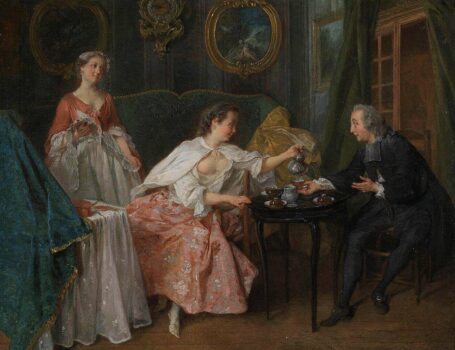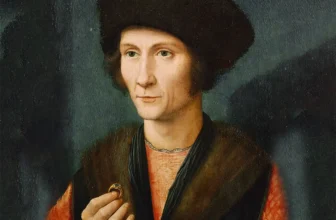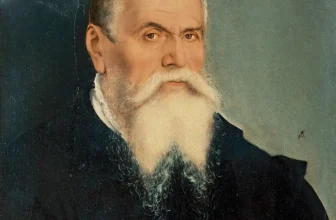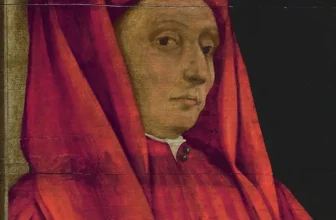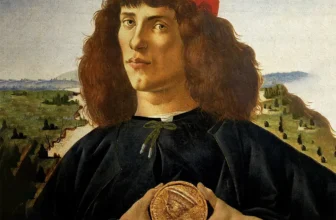Nicolas Lancret: The Charm of French Rococo and the Timeless Value of His Art
Nicolas Lancret and the Delicate Beauty of Rococo
Nicolas Lancret (1690–1743) remains one of the most captivating figures of the French Rococo era, a painter celebrated for his graceful depictions of leisure, music, and refined pleasure. His art captures the essence of 18th-century elegance, where beauty, charm, and wit defined the spirit of French high society.
While his contemporary Jean-Antoine Watteau is often credited with pioneering the fête galante, intimate scenes of outdoor amusement, Lancret expanded the genre with his own touch of theatrical storytelling, luminous color, and compositional harmony. His paintings still exude freshness, embodying the delicacy, lightheartedness, and sophistication that collectors and interior designers find irresistible even today.
In this in-depth exploration, we’ll look at who Nicolas Lancret was, examine his most famous artworks, unpack the true artistic and monetary value of his creations, and understand why his works continue to enchant museums, collectors, and lovers of Rococo aesthetics around the world.
Early Life and Training: From Humble Origins to Royal Commissions
Born in Paris in January 1690, Nicolas Lancret came from modest circumstances. His father was a coachman, far from the artistic circles that would later embrace his son. Lancret’s early artistic promise led him to study under Pierre d’Ulin, and later under Claude Gillot, who also taught Watteau.
This connection proved transformative. Under Gillot’s guidance, Lancret was introduced to theatrical themes, graceful movement, and a fascination with everyday joy, motifs that would become hallmarks of his art.
In 1719, Lancret was admitted to the prestigious Académie Royale de Peinture et de Sculpture, exhibiting his Reception Piece titled A Lady Giving Alms to a Servant (Une dame donnant l’aumône à un domestique). His acceptance into the Academy confirmed his place among France’s elite artists and opened doors to commissions from the royal court and aristocratic patrons.
The Rococo Style: Elegance, Fantasy, and Pleasure
To understand Nicolas Lancret’s art, one must first appreciate the Rococo movement that flourished in France during the early 18th century. Rococo was the aesthetic child of the late Baroque period, lighter, more playful, and centered around beauty, intimacy, and emotion rather than grandeur or heroism.
Lancret’s paintings reflect these ideals perfectly. His compositions are characterized by:
Soft pastel palettes: Creams, pinks, blues, and golds create a dreamlike atmosphere.
Fluid movement: Figures are arranged in graceful poses, often mid-gesture, conveying rhythm and spontaneity.
Delicate detailing: Textures of silk, lace, foliage, and sunlight are rendered with meticulous precision.
Joyful narratives: Love, flirtation, music, and dance dominate his subjects.
Lancret excelled at turning ordinary leisure into poetic visual symphonies. His art invites the viewer into an idealized world, neither entirely real nor fantastical, where emotion, refinement, and pleasure coexist.
Most Famous Artwork: La Camargo Dancing
Among Nicolas Lancret’s many celebrated compositions, “La Camargo Dancing” (1730) stands as his most iconic and widely recognized masterpiece. This painting encapsulates the energy, grace, and spirit of the Rococo era in one scene.
The Subject: A Star of the Stage
The painting portrays Marie Anne de Cupis de Camargo, known as La Camargo, a famed dancer of the Paris Opera. She was celebrated for her technical brilliance and for being one of the first women to dance en pointe and wear shortened skirts that allowed audiences to admire her precise footwork.
Lancret captures her mid-movement, performing before a small audience in an outdoor setting. Her silk dress swirls in motion, light filtering through its folds as musicians play nearby.
The Composition: Harmony and Light
In La Camargo Dancing, Lancret achieves a perfect balance between portraiture and genre painting. The composition is open and airy, with diagonal rhythms guiding the eye toward the dancer’s luminous figure. The audience’s admiration mirrors the viewer’s own delight, turning the painting into both a performance and a celebration of artistry itself.
Symbolism and Appeal
More than a depiction of dance, the painting reflects the Rococo fascination with elegance, sensuality, and joy. Lancret’s sensitive brushwork transforms movement into melody, creating an atmosphere of lightness and vitality that continues to captivate art historians and collectors alike.
Other Notable Works: The Variety of Lancret’s Genius
Beyond La Camargo Dancing, Lancret’s portfolio is rich with masterpieces that showcase his versatility and charm. Some of his most acclaimed works include:
The Four Ages of Man (1735)
This series of paintings illustrates childhood, youth, adulthood, and old age through scenes of social amusement. Each piece reflects the passage of time and the shifting nature of pleasure, rendered with warmth and emotional depth.
Breakfast (Le Déjeuner, c. 1739)
A domestic scene of elegance and intimacy, Breakfast presents a fashionable couple enjoying a quiet morning meal. The careful arrangement of porcelain, silver, and textiles demonstrates Lancret’s gift for compositional harmony and interior realism, offering a glimpse into the refined daily life of 18th-century France.
Conversation Galante (c. 1730s)
In this idyllic garden scene, elegantly dressed figures exchange glances and gestures of flirtation. The light filtering through the leaves, the shimmer of satin, and the rhythm of conversation reveal Lancret’s ability to make the mundane magical.
The Art Value of Nicolas Lancret: Collectability and Market Legacy
1. Historical Significance
Nicolas Lancret holds an essential place in Rococo art history. His works document the aesthetics and values of early 18th-century France, an era defined by refinement, sociability, and the pursuit of pleasure. His ability to translate these ideals into visual form gives his paintings both historical and cultural weight, making them key examples for collectors specializing in French decorative art.
2. Artistic Merit
Lancret’s technique and style have long been admired by art historians. He mastered color harmony, atmospheric perspective, and human expression, rivaling even Watteau in emotional subtlety. His brushwork is light but deliberate, conveying life and texture without losing delicacy.
This artistic mastery elevates his works beyond decorative appeal, they are visual essays on elegance and emotion, embodying the refined spirit of their age.
3. Rarity and Provenance
Many of Lancret’s paintings were commissioned for private collections or royal palaces, including Versailles. Because so many remain in institutional hands, those that appear at auction are relatively rare. This scarcity enhances their desirability and market value.
4. Market Performance
In recent decades, Lancret’s paintings have performed well at major auction houses such as Sotheby’s and Christie’s. Depending on condition, provenance, and subject, his works can fetch from hundreds of thousands to several million dollars. For example, a high-quality oil painting attributed to Lancret depicting a fête galante sold for over $2 million in recent years.
In today’s art market, original paintings by Nicolas Lancret can command significant sums at auction. Smaller oil sketches or studies might sell for around $50,000 to $150,000, while larger, well-documented works—especially those with strong provenance or museum exhibition history—can reach prices between $300,000 and $1 million. Exceptional examples occasionally exceed that range. For instance, notable sales at Christie’s and Sotheby’s over the past two decades have seen some of his most refined paintings achieve prices above $1.5 million, reflecting ongoing interest in 18th-century French painting.
Works on paper, such as preparatory drawings or engravings after his paintings, tend to be more affordable, often ranging from $5,000 to $20,000, depending on rarity and condition. Museum collections, including the Louvre, the Wallace Collection, and the National Gallery, hold key examples of his oeuvre, which helps sustain his reputation and influence in the art historical canon.
Overall, Nicolas Lancret’s artwork remains valuable both financially and culturally. While his market is more niche compared to modern or contemporary artists, his refined Rococo charm and historical importance ensure continued appreciation among collectors and institutions. As interest in 18th-century art endures, Lancret’s paintings continue to represent a graceful and enduring slice of French artistic heritage.
This consistent demand underscores how Lancret’s art appeals to both historical collectors and modern interior designers seeking authentic Rococo masterpieces.
5. Decorative and Interior Design Value
Lancret’s paintings also hold immense decorative value for luxury interiors. The soft palettes, romantic themes, and refined gestures of his works perfectly complement classic European, neoclassical, and Rococo-inspired interiors.
Designers often use reproductions or prints of Lancret’s compositions to bring warmth, charm, and sophistication to rooms styled after the 18th century. His art harmonizes beautifully with gilded frames, ornate mirrors, and pastel fabrics, creating timeless spaces that blend historical beauty with contemporary comfort.
Lancret and His Contemporaries: Between Watteau and Boucher
Jean-Antoine Watteau: The Mentor and Inspiration
Lancret’s early works were heavily influenced by Watteau, whose poetic fêtes galantes set the standard for Rococo elegance. While Watteau’s art often conveyed subtle melancholy and emotional complexity, Lancret’s compositions are more optimistic, theatrical, and narrative-driven.
He transformed Watteau’s gentle reverie into scenes of active sociability, giving the Rococo world more motion, laughter, and life.
François Boucher: The Heir of Rococo Splendor
Later in the century, Boucher carried Rococo to new heights of sensuality and ornamentation. While Boucher emphasized mythological fantasy and erotic beauty, Lancret remained closer to reality, his figures are charming but grounded, celebrating polite pleasure rather than mythic seduction.
Together, these artists defined the visual language of 18th-century France, shaping European art and taste for generations.
The Legacy of Nicolas Lancret
Despite his premature death at age 53, Lancret’s influence endured long after his time. His ability to balance graceful composition, vivid storytelling, and exquisite color secured his reputation as one of the key interpreters of Rococo life.
Influence on Later Artists
Lancret’s approach to narrative, gesture, and social observation inspired later painters who explored intimacy and leisure. His treatment of movement and rhythm influenced decorative arts, porcelain design, and even early photography’s interest in “capturing the moment.”
Modern Appreciation
In today’s art world, Lancret’s work appeals to both scholars and designers. His paintings feature prominently in major museums, including the Louvre, the Wallace Collection in London, and the Gemäldegalerie in Berlin. Exhibitions continue to highlight his role in shaping French visual culture and his contributions to Rococo’s enduring allure.
Collectors prize Lancret’s art not only for its rarity but also for its emotional clarity, his scenes still communicate joy, elegance, and human connection across centuries.
Why Nicolas Lancret Matters Today
In a world often drawn to bold modernism and abstraction, the continued appeal of Nicolas Lancret may seem surprising. Yet his paintings remind us of something timeless: the beauty of grace, the poetry of human interaction, and the value of aesthetic pleasure.
Lancret’s art represents an era when refinement was a virtue, conversation an art form, and beauty a shared experience. His works embody balance, warmth, and optimism, offering respite from the chaos of modern life.
For collectors, Lancret offers more than historical prestige, he represents an investment in enduring beauty. For interior designers, his art provides a link between the past and the present, evoking a refined ambiance that elevates any classical or eclectic space.
The Lasting Value of Lancret’s Rococo Vision
Nicolas Lancret remains a cornerstone of Rococo art, capturing in color and motion the elegance of 18th-century France. His most famous work, La Camargo Dancing, symbolizes the perfect harmony of music, movement, and joy that defined his era.
Today, Lancret’s paintings are cherished not only for their beauty but for their cultural and historical depth. They represent the pinnacle of French Rococo refinement, embodying themes of love, playfulness, and human grace that never fade with time.
Whether admired in the Louvre, hung in a stately home, or reproduced as part of a refined interior design, Lancret’s art continues to speak a universal language of elegance. His vision, delicate yet vivid, lighthearted yet intelligent, ensures that the world of Nicolas Lancret will always remain a symbol of artistic sophistication and timeless charm.
